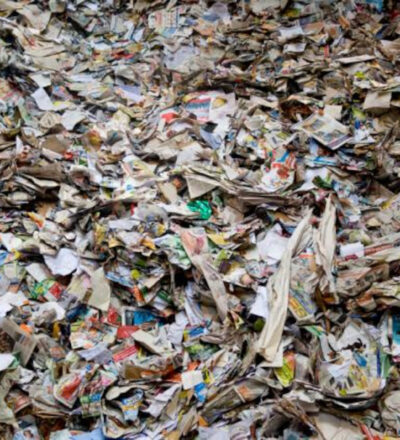As part of the circular economy, there is an increasing interest in converting waste streams into feedstock (hydrocarbons) and energy carriers (biogas, syngas, oil, heat, hydrogen). During this online matchmaking event on December 1 we aim to match our partners under-utilized residual streams with the most suitable conversion technologies.
There are many different technologies under development for conversion of complex residual streams into energy carriers and/or smaller building blocks. How these technologies fit with the characteristics of each of the complex residual streams is often unknown.
Challenges are:
- A high variation in composition
- Presence of contaminants
- Mixtures of biomass of plastics
- High mineral contents
- High water content and/or low and varying availability throughout the year
- High costs to get rid of these residual streams
ISPT wants to fill this gap by bringing together the owners of the residual streams, the innovative technologies ánd the experts in possible feedstock-process combinations from physical and thermodynamic perspective at this event.
You are welcome to join us
Our aim is to set up a joint development programme for the most promising waste stream valorisation processes
Please feel free to join us on December 1st. Due to the recently tightened governmental and in-company Covid-rules we have decided to change the physical event into an on-line pre-event from 14.00 to 16.30h. A follow-up physical matchmaking event is planned on 15 March 2022
Programme
14.00h – Introduction (ISPT) + Antitrust rules
14.10h – Overview on the characteristics and challenges of the residual streams amount, seasonality, variation, composition, contaminations, challenges, current application
14.30h – Technology suppliers – feedback on applicability of their technology to the feedstock characteristics
16.00h – Experts view
16.30h – Closure
We are pleased to announce the technology suppliers that will present
- Alucha has a pyrolysis process for materials that consist of plastic or biomass on the one hand and minerals or metals on the other. The plastic/biomass converts into gas and oil, whereas the metal or mineral is left unchanged. Example feedstock are laminate materials (drink cartons, tooth paste tubes, pouches etc.) and mixed plastics, but also biomass streams such as sludges, rice husk and other similar streams.
- BioBTX has an Integrated Cascading Catalytic Pyrolysis (ICCP) technology that converts non-food biomass and plastic waste into BTX, which are vital components needed to create high performance materials, such as new plastics.
- Carbonauten has an advanced pyrolytic carbonisation technology producing biocarbons from woody residues of biomasses from forestry, agriculture, food and wood industries. The products consist of a combination of biocarbons with various binders such as proteins, biopolymers, polymers, silicates, minerals, etc., which have new, sometimes superior properties, including weight and durability.
- DBG Bioenergy uses a patented enzyme technology, EpiCellulyse XT™, that converts high volumes of industrial biomass waste with no emissions or harmful effluents, into green BioLNG (biogas) for the energy and heavy transport sector as well green fertilisers for agricultural uses.
- DOPS DCI-process is a new, energy efficient, high temperature thermal conversion (combined pyrolization, carbonization, gasification) process. It “eats everything” as long as some hydrocarbons are still present. Polluting substances (PAC’s, PCB’s, dioxins, PFAS, etc.) will be broken down to basic elements and small molecules.
- SCW Systems develops the supercritical (water) gasification technology that converts (wet) organic residual flows such as sewage sludge, agricultural biomass, organic waste and industrial residues into green raw materials for the chemical industry and green fuels for the energy industry. The conversion takes place under high pressure and temperature above the so-called supercritical point of water. The output consists of green gas (methane), green hydrogen.
- Stork has developed the Solena Plasma Enhanced Gasification (SPEG) process that could potentially disrupt the hydrogen production market by producing 11 ton/day/unit green hydrogen from 120 ton/day/unit waste material, without the drawbacks related to electrolysis and gasification. The first unit will be constructed in Lancaster California.
- TNO investigates their proprietary so-called phlegmatization technique for the waste treatment of energetic materials, which are components that can release a lot of energy in a short time (explosives/fireworks/flares…).
- TORWASH® is a patented hydrothermal process that converts wet organic residues into a solid biofuel that can be used for heat and power applications. This process is performed under elevated temperature and pressure so that water does not evaporate. Water works as the reaction medium for hydrolysis reactions to take place leading to a stream that can be efficiently separated in a solid and a liquid fraction. The solid fraction can be efficiently pressed into pellets and from the liquid fraction, that contains dissolved organics, biogas can be produced in a digester. The biogas is sufficient to cover the energy requirements of the process. This makes it a zero-waste and energy-neutral process.
We have identified the following side streams
Click here to view the list of side stream categories
Platform on Waste Stream Valorisation Processes
This event is a starting point for the set-up of an ISPT Platform on Waste Stream Valorisation Processes. In this platform we will exchange knowledge and expertise on innovative technologies to assist the owners of residual streams in judging on – or distinguishing between – the applicability of the different technologies, or the potential market of the resulting (mixture of) components.
For the most relevant and promising waste stream valorisation process(es) a joint development programme will be set up.
